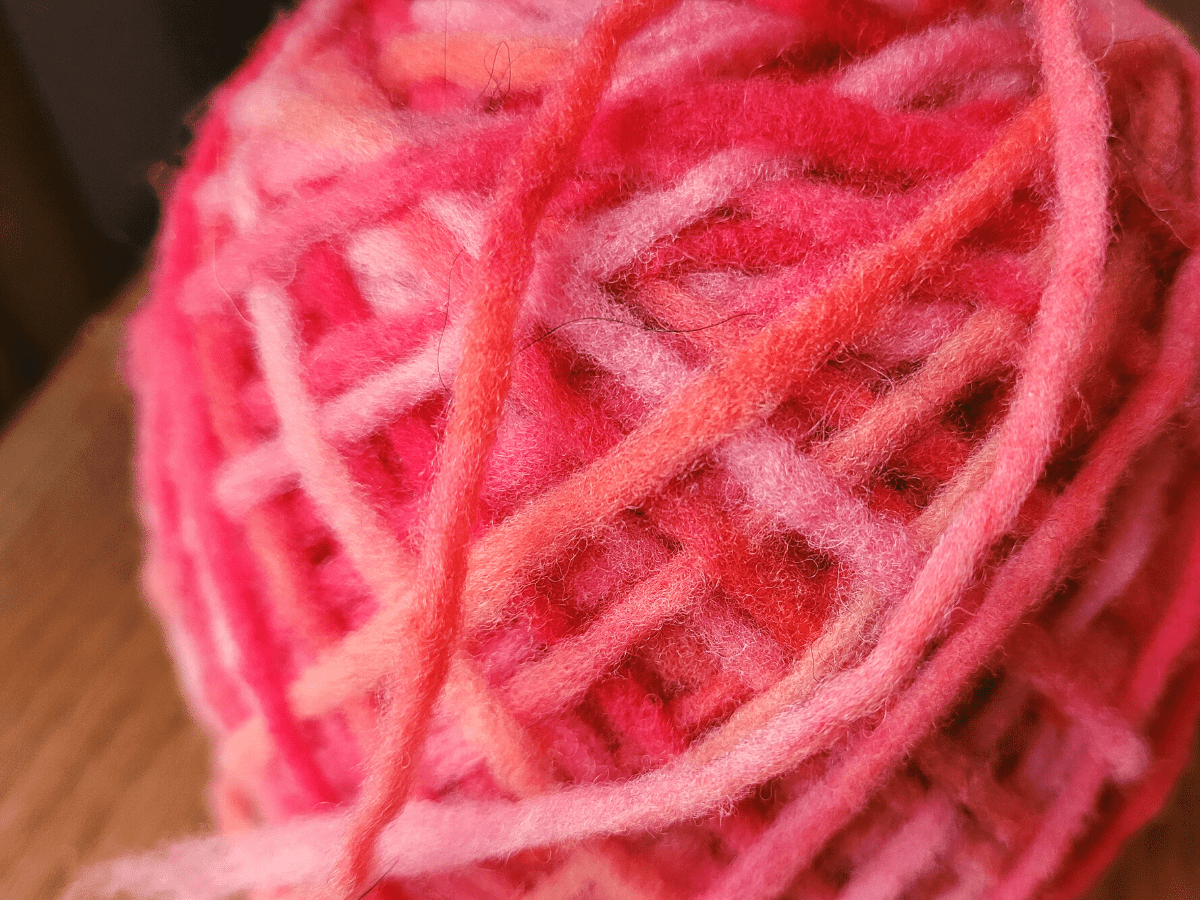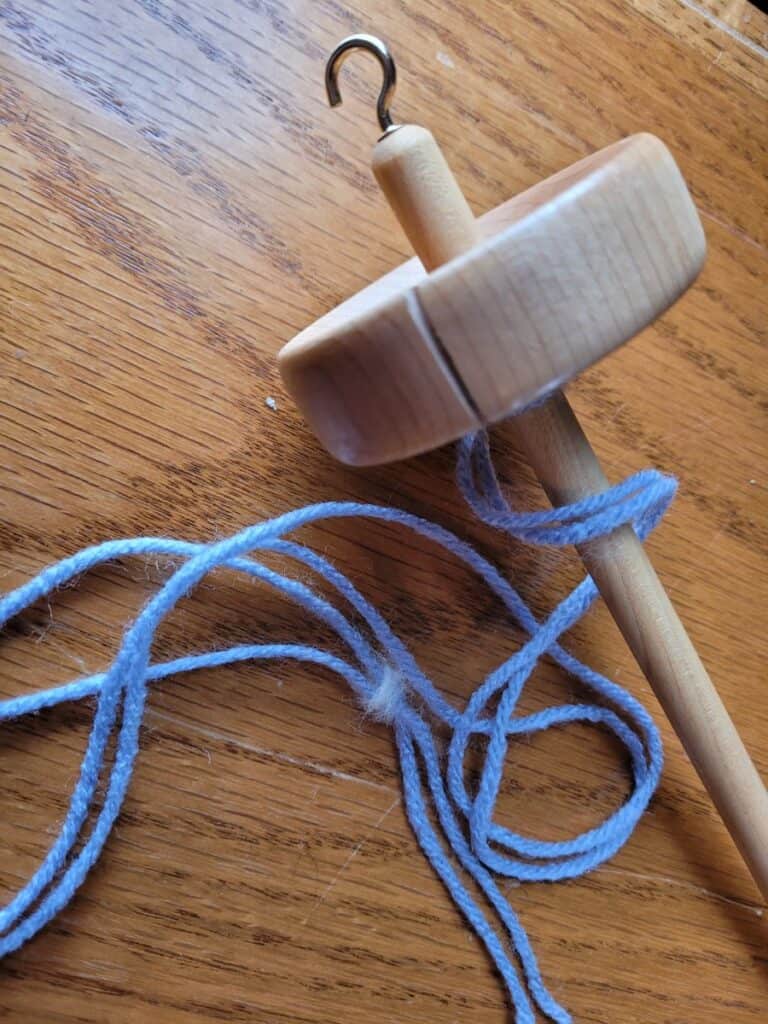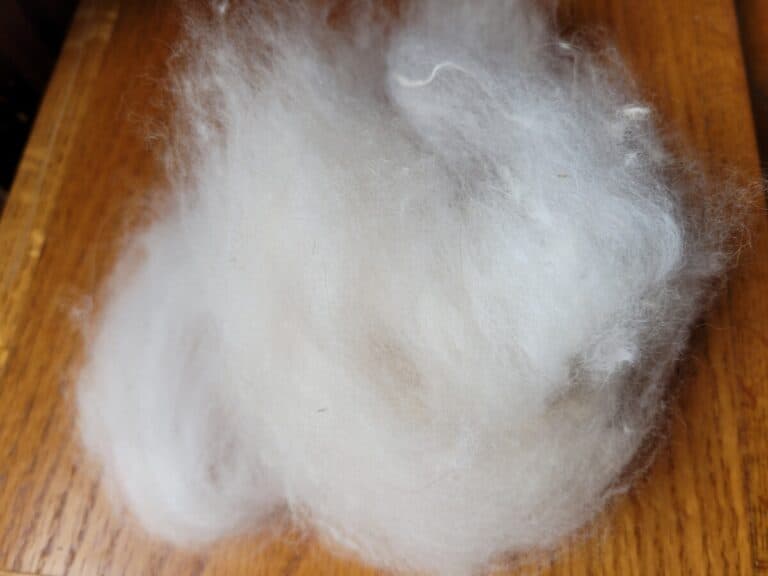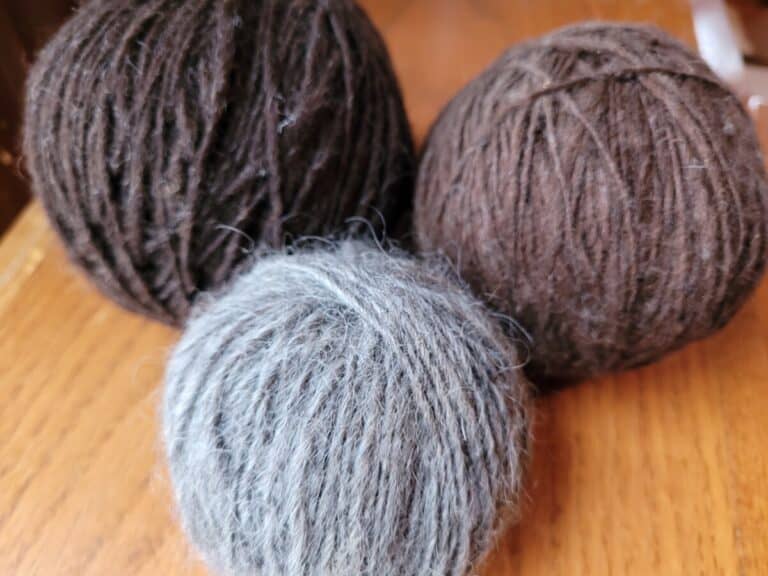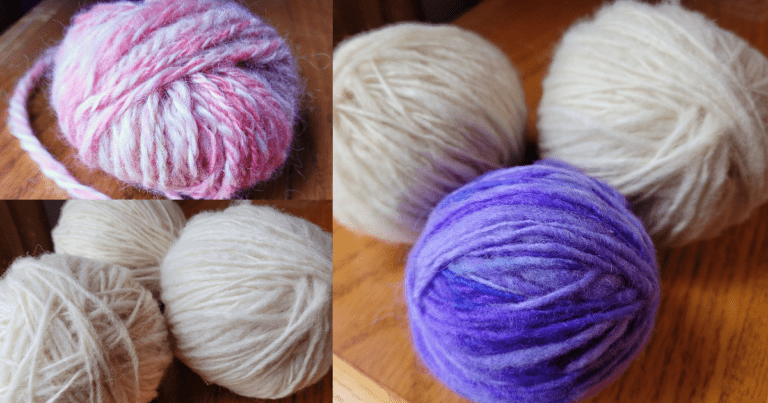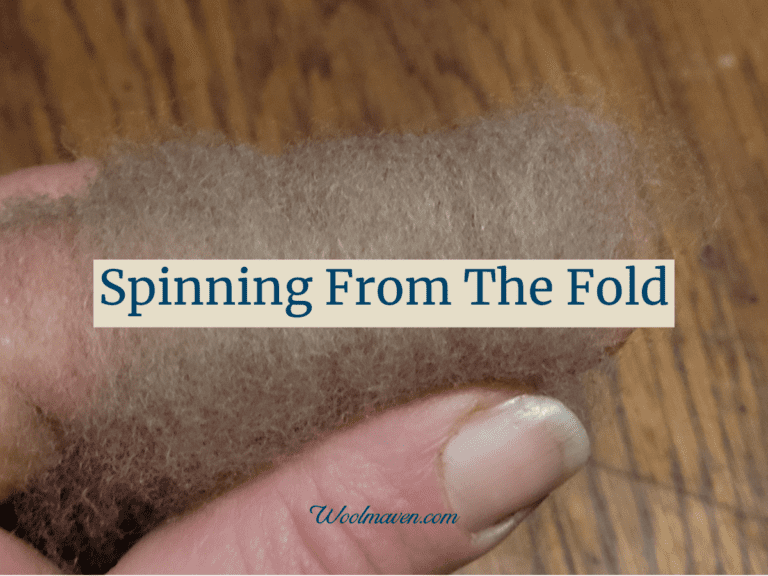How To Spin Pencil Roving For Beginners
Roving, roving, everywhere! And you can add a new one to your list of possibilities: pencil roving. Before you can figure out if you should try it or not, you need to know how to work with it, so how do you spin pencil roving?
Pencil roving is spun in a worsted style. Pencil roving can be handspun as is (without further drafting) to make a thicker yarn or drafted out to make a thinner yarn.
What Wool Is Best For Handspinners To Start With? goes over some options of very easy to work with wools that will make learning to spin easier!
Frustrated and need some help with your spinning? Join Woolmaven Handspinning, it’s a step by step course that will get you going with your spinning that you take at your pace on your schedule!
How to spin pencil roving
Pencil roving can be spun as is, straight off the ball of “almost yarn” that it comes in. Really, it looks more like the spinning has already been done for you!
If you want to make a yarn that is the thickness of the pencil roving, all you have to do is add more twist as you spin in the clockwise direction. It’s almost too easy.
This is what I did to work with the pencil roving I purchased, just to see what it would do.
It actually bothered me to spin it the first few times I used it. I was doing so little work, it felt like I was just treadling away and doing nothing!
Once I set the yarn, then dried it, of course I could see a difference between the pencil roving and the single ply that I had made, but at first glance the differences are small.
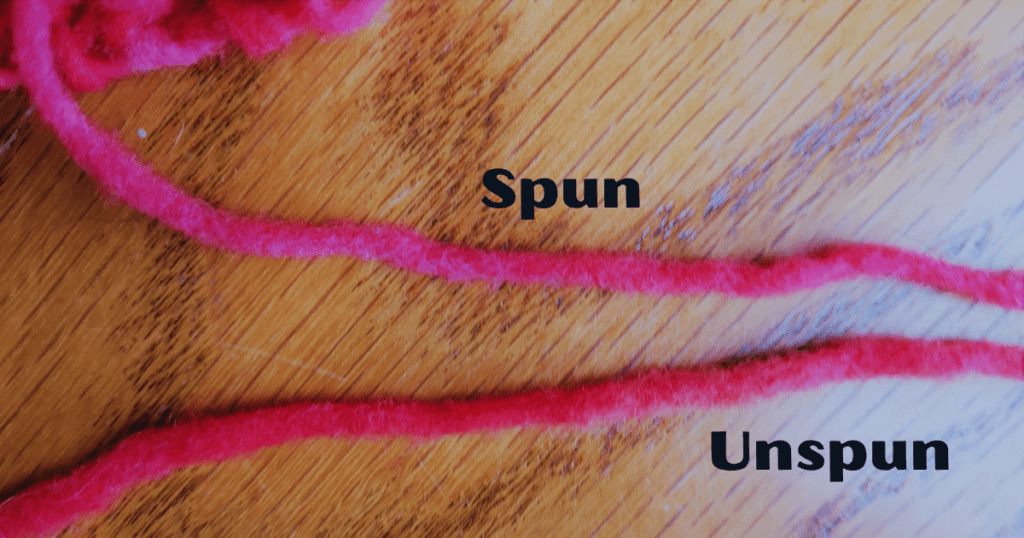
You can also draft pencil roving
Pencil roving can be drafted, just like other prepared fibers.
If you want to make a thinner yarn that requires a bit of drafting, consider spinning in the counterclockwise direction for your single.
This will take out the little bit of twist already in the pencil roving so it will be easier for you to draft out your fiber to the yarn size you want.
Your fiber supply is wound like a ball, so you’ll need to stop spinning and unwind more pencil roving to use as you go or figure out a way to have the ball of roving roll around to provide more fiber as needed.
If you want it to roll, consider using a bowl on the floor and let the pencil roving be pulled into the wheel, as needed.
Can You Spin Combed Top? walks you through the reasons why you might want to give combed top a try for your next spinning project.
Pencil roving has other names
Pencil roving has multiple names, all of which mean that the fiber is of pencil diameter or smaller, but with a few variations in size and name.
I have seen pencil roving also listed as pre yarn, super chunky yarn and unspun yarn. It is also similar to the lopi preparations for icelandic wool, are also commonly listed as pencil roving.
Most folks selling or buying wool to spin put all of these into the category of pencil roving.
Pencil roving comes in different thicknesses
If you search around, online, you’ll find that pencil roving can be anywhere from about a pencil wide down to worsted weight yarn size, what you get depends on how the shop you ordered from makes it.
Worsted weight yarn sized pencil roving
The pencil roving I got was the worsted weight yarn size, so it could easily be used as is and seems to be a popular choice for felting accents, like borders and letters.
This is the more common size that I see when spying around.
Pencil sized or larger pencil roving
Pencil roving also comes in more of a pencil size, which is what Santa Fe Wool has available.
Also called pre yarn or super chunky yarn, pencil sized pencil roving is also used for weaving, crochet and machine wash felting, in addition to spinning!
If you like the idea of pencil roving, but are not finding the size that you think you would like to work with, look around and see what is available at other shops.
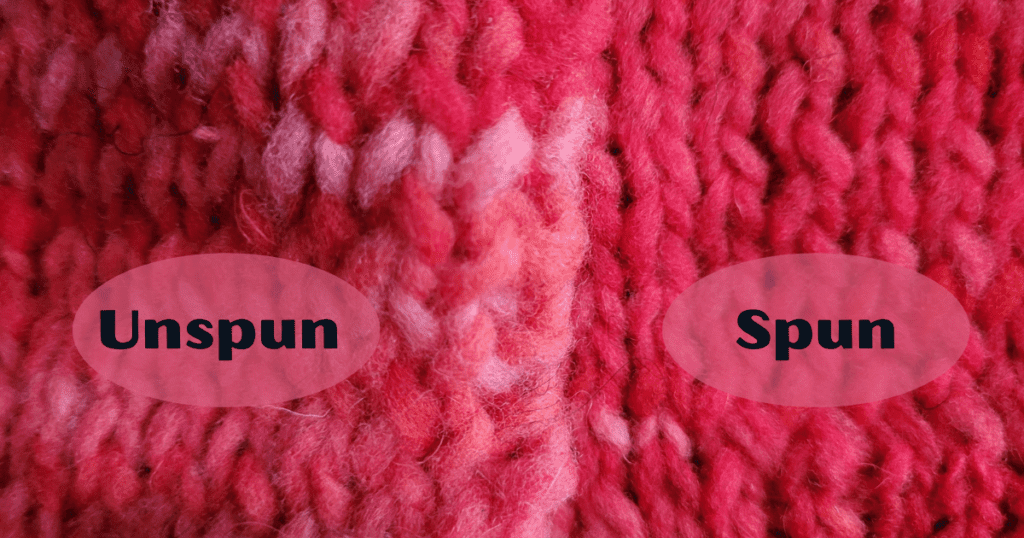
Pencil roving is actually roving
Pencil roving is actually roving, which at first may sound like a dumb thing to say, as in “of course it’s roving, that’s what it’s called!”
Commonly, the word roving is used to mean almost any ready to use fiber not just fiber specifically prepared in a way that makes it true roving (more fluff and has the fibers going in different directions).
Pencil roving is true roving. This threw me a bit while I was experimenting with the best way to use the pencil roving.
Then, I realized that I was used to working with combed top, then I “got it” and understood why the pencil roving was not doing what I though it would do, because I was mentally comparing it to top!
Zeilinger Wool Company has a nice article on the differences between fiber preparations, specifically pencil roving, roving and pindrafting.
Pencil roving is available in different breed wools
While there are not a ton of choices regarding pencil roving, there are a few options of different wools in your pencil roving, mainly merino, merino and rambouillet or icelandic.
I’m sure there are a few other pencil roving options available, these are just the few that I have found.
Pencil roving is beginner friendly
Pencil roving might be just the thing you are looking for if you are new to handspinning.
If you work with pencil roving, you’ll do minimal to no drafting while you get practice working with your hands and treadling at the same time.
I remember when I was first learning to spin that I had a hard time drafting, I was too busy trying to figure out the rest of the wheel.
Using pencil roving would have made this easier on me by taking out one of the steps, at least until I got more used to what I was doing!
My experience with pencil roving
I got my pencil roving from The Woolery. It is a merino and rambouillet blend and is the thinner, more pre yarn type of pencil roving made by Phoenix Fiber Mill.
It is a 24-25 micron and has a 3+ inch staple and is suggested for use in spinning, felting and weaving.
They had quite a few interesting color choices, I went with Loveland, which is a hot pink, light pink and a bit of an orange or peachy pink mix.
I was, as mentioned above, too easy to spin, it actually made me wonder if I was doing it wrong!
Then, after setting the yarn, I realized it was going just fine (there was enough twist getting in there) and looks like a nice, worsted weight yarn that knitted up nicely, as well.
I also knitted some of the unspun roving as a single as well as doubled, both work great making a flat square, no worries about it pulling apart.
Now for the less good news, I noticed it bled when I set it, so much so that I stuck in some extra BFL to suck up the dye, worked great!
The other thing is that as soon as I started to try to draft this roving, it went wobbly on me.
I had a tough time figuring out how to make a thinner yarn with it without breaking the roving. I did end up figuring it out but didn’t like the end result.
Overall, while I like the color of the pencil roving, I would not want to have too much more of it hanging around.
I just don’t get much use out of it and would rather just use combed top for my spinning.
Need some help? Check out Woolmaven Handspinning and get going with beginner specific lessons that you can take anytime you wish!

